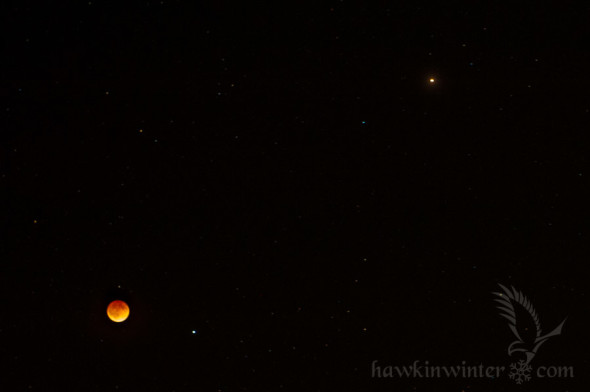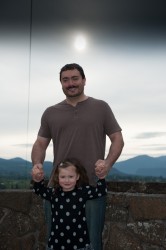Tonight we were treated to a rare astronomical event (for those of us willing to stay up late anyway). Starting around 11 PM on April 14th, the Moon passed through the shadow of the Earth cast by the Sun, darkening it and casting it in a reddish hue. Cloud cover threatened to spoil the event, but the clouds parted about 15 minutes before the point of maximum redness, around 12:45AM on April 15th. I was ready with my tripod and camera.
Also prominent in the photo is Mars, which is currently at its closest point to Earth in the past six years. I woke up my daughter and brought her outside to see the two bright red objects. She was very tired and cold but acknowledged seeing the moon and quickly asked to be brought back inside. I put her back to bed and before I left her room she asked: “Daddy, if you see any more cool stuff tonight please wake me up!”. I agreed.













